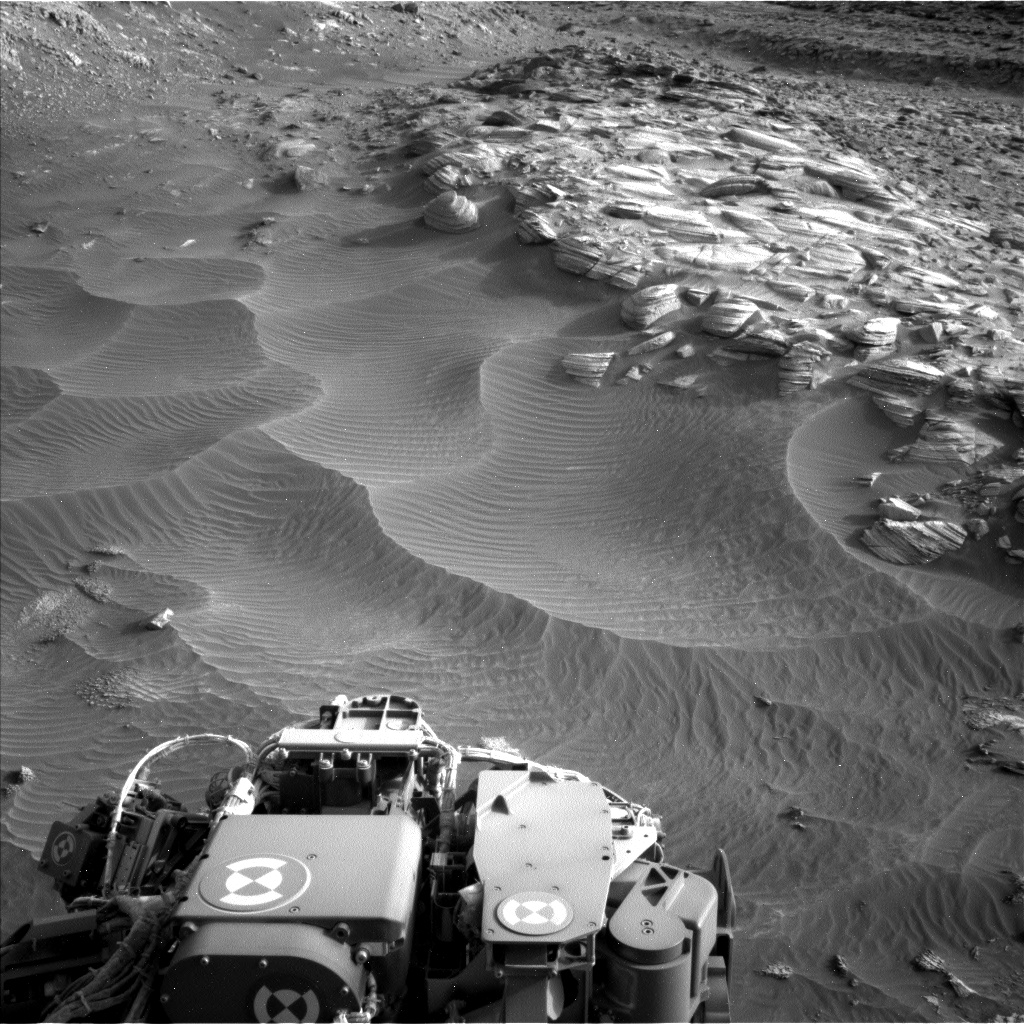2 min read
Sols 4323-4324: Surfin’ Our Way out of the Channel

Earth planning date: Wednesday, Oct. 2, 2024
As a member of the group tasked with organizing our campaign to investigate the Gediz Vallis channel and deposit (informally known as the Channel Surfers), I was a little sad this morning to see that our drive had successfully taken us out of the channel, back onto the magnesium sulfate-bearing unit, into which the channel is incised. Our long-anticipated investigation of the channel has proven fruitful: Curiosity made the first definitive detection of elemental sulfur on Mars, and we have examined a variety of intriguing lithologies and relationships within the deposit over the last 4.5 months. It has been an exciting time, and I have particularly enjoyed riding this wave with my fellow Channel Surfers — a great team! Now to make sense of all the fantastic data we have collected.
We are not completely done looking at the channel and deposits though. We will be driving parallel to the western margin for a while to facilitate comparisons with what we observed from the east. Tosol we will image two areas of interest within the Gediz Vallis channel from our current vantage point with Mastcam and ChemCam long-distance RMI. But back to the sulfate unit — the team planned a number of activities to document the return to the sulfate unit. These include APXS and MAHLI of the nodular bedrock immediately in front of the rover (“Sub Dome”), ChemCam LIBS and Mastcam of another bedrock block (“Vert Lost Grove”), and Mastcam of the resistant bedrock ridge immediately adjacent to the Gediz Vallis channel (“Muah Mountain”).
Once the drive of about 25 meters (about 82 feet) hopefully executes successfully, Curiosity will look down and image the terrain between her front wheels with MARDI, acquire ChemCam LIBS on an autonomously selected target in the workspace, and then perform a series of atmospheric and environmental observations. These include a Mastcam tau to measure dust in the atmosphere, Navcam dust devil and suprahorizon movies, and a Navcam line-of-sight observation. The plan is rounded out with DAN, RAD, and REMS activities.
Written by Lucy Thompson, Planetary Geologist at University of New Brunswick































